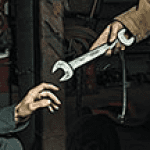
The bane of our existence is one thing, generating enough data to demonstrate statistical confidence. Every reliability engineer, every project manager, every Director and VP all have the same moment of panic in a new product development program. In synchronicity they put their head in their hand. It’s when the required number of test units and calendar time to demonstrate a required confidence in the reliability goal is calculated. It’s usually about ten times more units than can be acquired and about two times longer than the entire product development program timeline.














